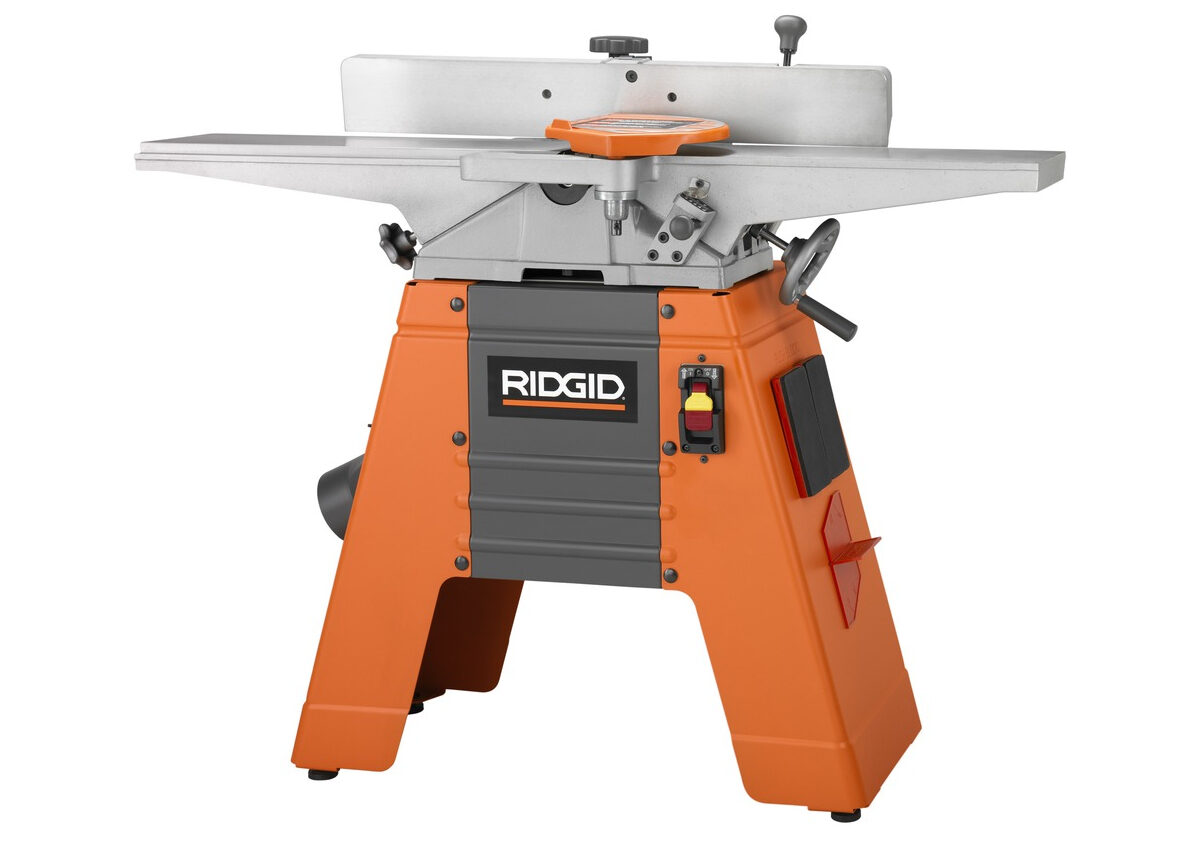We may earn revenue from the products available on this page and participate in affiliate programs. Learn More ›
Craftspeople tackling fine woodworking projects need their stock to be as flat, square, and consistent as possible. These pieces require exact measurements and markings, and edges that are out of square or sections that are thicker or thinner than the rest can wreck the whole thing.
Using a jointer and planer, it’s possible to achieve these machine-like dimensions. But what does each tool do? Find out in this detailed jointer versus planer comparison.
A jointer creates one flat surface on a board at a time.
Many newer DIYers may wonder, “What does a jointer do?” A wood jointer, also known as a jointer planer or benchtop jointer, is a long, flat tool with two wings (one adjustable and one not), a cylindrical blade, and a fence, and its job is to flatten one surface on a board.
Adjusting the feed section of the jointer removes a thin layer of wood when the user passes the board over the spinning blade. Subsequent jointer passes will remove more wood until the surface becomes one flat, consistent plane.
The user can then register this flat, consistent side against the fence and pass an adjacent side over the spinning blade using the same method described above. This will result in two perfectly flat sides that are also perfectly square to one another. Next, the woodworker can register the square corner against a table saw fence and rip the opposing edge off of the board, resulting in three flat, square, parallel sides.
But, what about the fourth side? Well, a jointer can technically flatten it, but it cannot provide a consistent thickness across the length of the board. Only a thickness planer can do that.

Our Recommendation: RIDGID 6 Amp Corded 6-1/8 in. Jointer/Planer at The Home Depot for $799
RIDGID’s Jointer Planer offers a wide table length, can flatten boards up to 6 inches wide, and has a 1-horsepower motor for plenty of flattening power.
Related: 17 Types of Wood All DIYers Should Know
A planer is used to create boards of uniform thickness.
As with jointers, those new to woodworking might also ask, “What is a planer used for?” A planer tool, also known as a thickness planer or benchtop planer, can adjust the thickness of a board. These tools have a flat bed in the bottom for passing the boards over, and a set of rollers that hold the board perfectly flat against the bed. A set of blades are perfectly parallel to the flat bed and peel off small bits of wood with each pass.
After enough subsequent passes, the top side of the board will be parallel to the bottom side of the board, resulting in a consistent thickness from side to side and end to end. Woodworkers can also feed several boards through the planer, ensuring that they’re all the exact same thickness for consistent results.
However, thickness planers have limitations. They cannot create square corners without a homemade jig, and thinner stock cannot be passed through on edge with any degree of accuracy. But, for a board that already has three flat and square sides, a planer can finish the job while also allowing the user to quickly and accurately determine the board’s thickness.

Our Recommendation: DEWALT 13-Inch Thickness Planer on Amazon for $644.99
This DEWALT Thickness Planer has a 13-inch capacity, 10,000-rpm top speed, and three-blade cutter head for smooth results.
Jointers and planers are best used together for fine woodworking projects.
For woodworkers to achieve the best results, they need to use jointers and planers in tandem. When it comes to flattening and squaring a board, a jointer can do things that a planer simply cannot. But, when it comes to quickly reducing the thickness of a board, or ensuring that opposing planes are parallel, the planer is the only tool for the job.
With these two tools (and the addition of a table saw), woodworkers can mill their own stock with far better consistency and accuracy than anything off the shelf at a lumberyard or home center.
Related: 11 Things to Know Before Visiting the Lumber Yard
Final Thoughts
Ultimately, woodworkers and DIYers need to weigh the cost of these tools versus their benefits. Yes, they are expensive, and spending hours with a hand plane, sander, and try square can achieve the same results. However, for their consistency, convenience, and speed, both a jointer and planer have an important place in any woodshop.
The prices listed here are accurate as of publication on 3/31/22.


